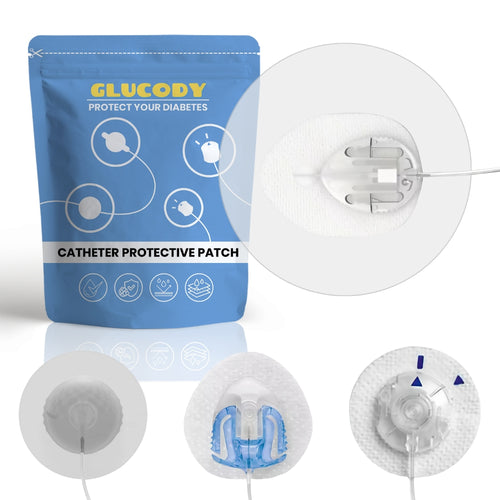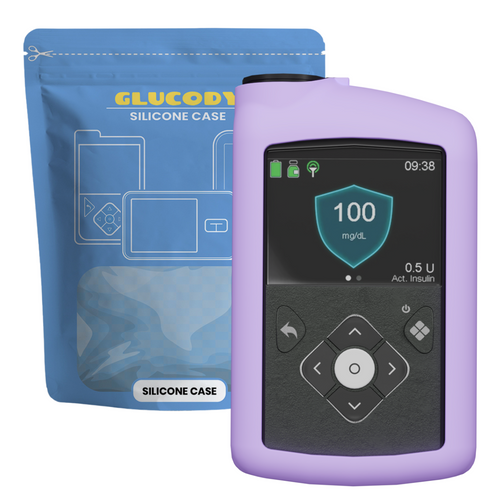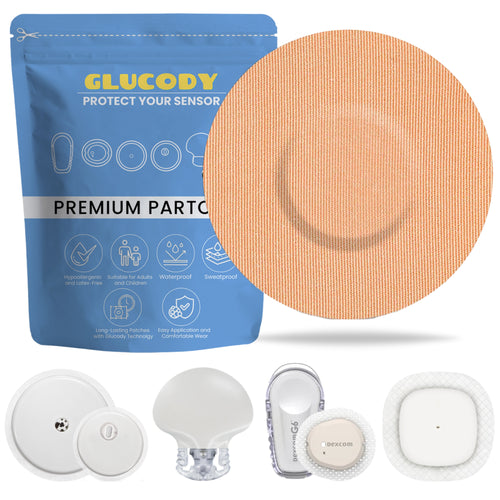If you live with type 1 diabetes (or care for someone who does), you're undoubtedly familiar with sensors and devices that help monitor glucose levels, such as diabetes patches. But do you really know what diabetes patches are and how they work exactly?
Diabetic patches have revolutionized disease management, offering comfort, precision, and greater freedom for those with this condition. But, in addition to the device itself, there are also patches to cover the diabetes sensor, which help protect it and keep it in place. How are they used? What are their benefits? How long do they last? Here's how.
What are diabetic patches?
Diabetic patches, or diabetic patches, are adhesive devices (usually transdermal) designed to help manage diabetes. They are used to monitor blood glucose levels, administer medications such as insulin, or protect monitoring devices.
-
Continuous glucose monitoring (CGM) sensors , such as the FreeStyle Libre or Dexcom. These patches are used to measure glucose; they are placed on the skin (usually on the arm) and measure glucose levels in real time.
-
Insulin patches (in development or available in some regions) that deliver insulin through the skin (transdermally) without the need for injections. For example: V-Go (a disposable device that delivers basal and bolus insulin).
-
Protective patches , which are placed over the sensor to keep it securely attached for days or even weeks. At Glucody, you can find a wide range of protective patches to cover your diabetes sensor, specially designed to protect without causing discomfort.
At Glucody, you can purchase your Freestyle Libre 2 sensor protector to keep your glucose sensor protected.

How do diabetes patches work?
Their operation depends on the type of patch, but they generally use innovative technologies to avoid punctures or injections.
Glucose monitoring patches
These patches function as adhesive sensors placed on the skin, usually on the arm or abdomen. They contain a small filament that penetrates the surface to measure glucose levels in the interstitial fluid (the fluid between cells). The data is transmitted wirelessly to a mobile device or monitor, allowing continuous monitoring without the need for constant pricking.
Technologies such as the FreeStyle Libre (Abbott) and the Dexcom G6/G7 are advanced examples that offer real-time alerts when glucose levels become too high or too low, improving diabetes control.
Insulin injection patches
These insulin patches are placed on the arm and other areas such as the abdomen. They are designed to deliver insulin through the skin without visible or painful needles. They use biodegradable microneedles or transdermal diffusion systems that release the hormone in a controlled manner. Some, like the V-Go, are disposable devices that provide basal insulin and additional doses on demand.
Others, still in development (such as prototypes at MIT), respond to glucose levels automatically, mimicking the function of the pancreas. Although promising, their availability is still limited and they require medical supervision.
Protective patches for sensors
These adhesive patches are placed over the glucose sensor (such as the FreeStyle Libre or Dexcom) to better secure it to the skin and prevent it from becoming detached due to sweat, water, or movement. They are usually hypoallergenic, water-resistant, and breathable.
Some include ingredients like povidone-iodine to prevent infections at the insertion site. They don't interfere with measurements, but they do extend the sensor's life. They are recommended for active people or those with sensitive skin.
Advantages of using diabetes patches
Whether you use glucose sensors or insulin pumps, adhesive patches play a very important role and offer significant benefits in your daily routine.
-
Longer device life : By remaining stationary, the sensor can complete its useful life without becoming detached.
-
Comfort and freedom of movement : You can swim, run, shower or sleep without worrying about it falling off.
-
Prevent irritation : Good patches are designed with hypoallergenic materials that care for your skin.
-
Greater safety for children : In pediatric patients, it's common for the sensor to become detached due to play or sudden movements. The patch keeps it firmly in place.
-
Discreet or playful designs : There are patches for all tastes, from neutral colors to lively prints.

How long can a diabetes patch last?
It depends on the type of patch we are talking about:
-
A glucose sensor like the FreeStyle Libre typically lasts 10 to 14 days, while the Dexcom G6 can be used for up to 10 days at a time.
-
The lifespan of an insulin patch varies depending on the model: some last 24 hours (such as the disposable V-Go), others, such as continuous infusion systems, typically last between 1 and 3 days. Experimental prototypes may last up to 3-5 days.
-
A support patch, like the ones we offer at Glucody , can last up to 7 days, depending on factors such as physical activity, sweat, or whether you shower daily.
Tips to protect your diabetes patch
If you already use a sensor or are thinking about using one, here are some helpful tips to make your patch last longer and properly protect your device:
-
Clean the area thoroughly before applying the sensor : Make sure there is no cream, sweat, or residue that could hinder adhesion.
-
Avoid rubbing with tight clothing : This can gradually lift the patch without you noticing.
-
Don't touch it constantly : Curiosity is natural, but handling it weakens the adhesive.
-
Use quality patches : At Glucody, we make products designed for active people, with durable adhesives and skin-friendly materials.
-
Consult your doctor if you have allergies : If you experience itching or redness, it could be a reaction to the adhesive. Always look for hypoallergenic products.
-
And, of course, change the patch if it gets too wet or starts to peel off. A poorly attached sensor can give inaccurate readings or even stop working prematurely.
Take care of your diabetes sensor with Glucody products
Now that you know more about diabetes patches and how they work, it's clear that they're not just an accessory. They're a key tool for protecting your medical devices and ensuring they perform their intended function.
At Glucody, we offer a wide selection of diabetes sensor patches , tailored to different sensor models, lifestyles, and aesthetic preferences. All our products are designed with durable, breathable, and skin-friendly materials.












